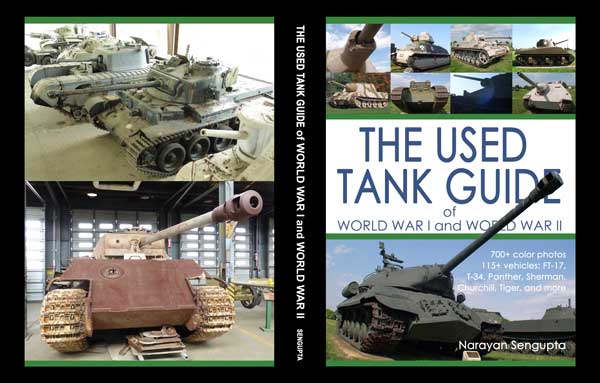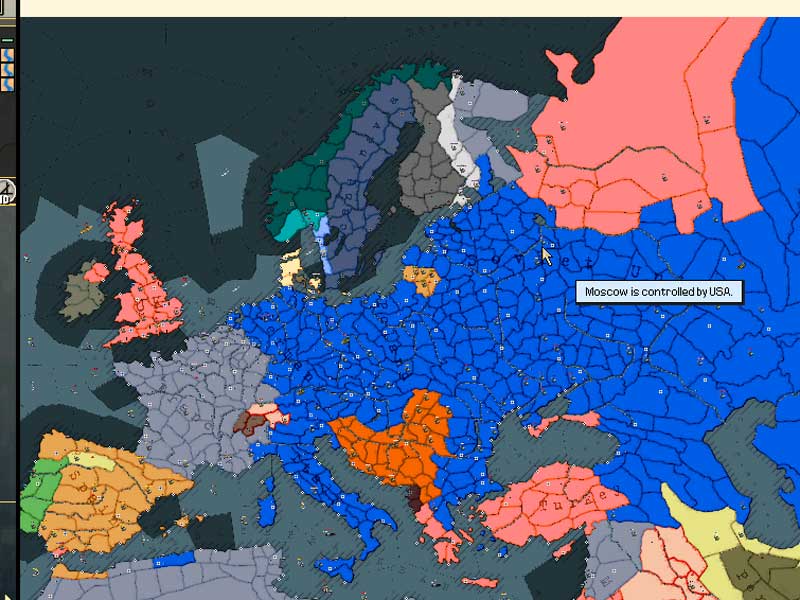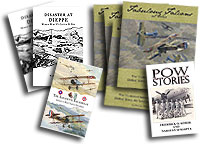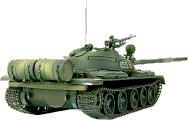by Philip Nelson
Advanced Scouting Techniques in PG3, Part One
Good scouting in PG3 is extremely important; without it, armies will
easily blunder into ambushes, traps, and otherwise undesirable situations.
Scouting is made quite interesting in PG3 due to a complex spotting system-
which involves profile, terrain, and recon screening (among other things).
This article will focus on ways to efficiently use the scouting resources
at your disposal.
The recon class is dedicated to scouting, and not surprisingly recons are
overall the most mobile ground units. Their second veteran order is an
excellent patrol order, revealing everything within range; but since it
only applies once per turn, it should be used wisely. Incidentally, no
other unit in PG3 has that ability. To use its patrol order most
efficiently, a recon's scouting objective for the turn should be
considered; and one common task is clearing the way for a battle-group.
In that situation, using the patrol order at or a little ahead of the point
where the main body of the task force will set up defenses for the turn
will probably be ideal. One inherent problem to be overcome involves the
possible existence of ambushes in its way; if the recon does not use its
patrol order to clear the area through which it must move, or if it
advances so slowly that it cannot perform its mission, it could be
devastated. There are some good ways to take care of that, the easiest of
which can simply be using a second recon. If one of them has Force Recon
while the other does not, use the recon without the class medal to clear
the path. But one does not always have the luxury of two recons per task
force, and in that situation the following tactics can help a great deal:
One, use a regular fighter's patrol order to clear the terrain in the
recon's path. To do so efficiently, fly the fighter to the most
likely-looking ambush location (forest roads, bridges, towns, etc.) near
the middle of the recon's route (or farther along it if it will be more
efficient), and then patrol the region. That will immediately show whether
or not there is an ambuscade at that spot, and the patrol order will help
clear the surrounding terrain. If the fighter has enough actions, one can
'step' it up the recon's designated path to a likely spot and then patrol.
Starting it at a point two hexes away from the recon, and moving the
airplane three hexes further down the path each step will clear every hex
in the recon's path, though there could still be unseen enemy units
alongside it that would stop the recon with their zones of control. Note
that such a tactic can also be a good use for a fighter that cannot issue
the patrol order
Two, regular ground units can also be used to safely clear the way by
'leapfrogging' them in the direction of the advance. The idea is to
constantly move units to the next hex directly in front of the current
unit. That will prevent any ambushes, and will allow a recon to move
quickly and safely to the front. Consideration should be given to
logistics to avoid things like trapping a needed artillery piece in the
rear, or wasting movement. Also, don't advance so far with regular units
that a good defensive perimeter cannot be organized, unless you are
certain- or are willing to risk- that the enemy will not be able to exploit
the state of your task force.
Note that the first alternate path-clearing method has the advantage that
any enemy ambushes spotted can then be dealt with normally, whereas in the
second key units might be out of position. That problem can be mitigated
by good traffic control. Now the second method can have the advantage of
thoroughness if there is not a fighter available with enough actions to
complete the 'stepping' technique; for the fighter patrol order might not
spot everything. Also, that order's effectiveness can be diminished by
weather. Finally, combining methods (including the more-than-one-recon
method) can frequently help.
Advanced Scouting Techniques in PG3, Part Two
Another key task for recons can be scouting an enemy defensive position.
Advancing the recon near the center of the enemy defensive area and then
using the patrol order should usually reveal the most enemy units. Unless
you have overwhelming firepower within assault range, however, be careful
to not overextend the recon to a point where it cannot safely return to a
friendly perimeter. If you do have such firepower, overrunning the enemy
defenses should protect the recon regardless of how far into them it
initially probed, which means it could perhaps be used to safely provide
more thorough information, the most valuable of which can be the spotting
of enemy air-defense emplacements. Note that, of course, a recon's initial
advance towards the enemy can be made safer by the application of
path-clearing techniques.
By the way- as a general rule- recons should not be left on their own
unless you know there is little danger, or unless you are using them as
intrepid behind-enemy-lines heroes (or expendable bait). :-)
A third useful scouting task for recons is hunting down units (especially
damaged units) that were spotted at one point but then disappeared. Ground
units are usually fairly easy to find; one can estimate how far they would
travel, guess their approximate location, and send the recon near that
point. If that does not uncover the unit, a patrol probably will. Other
units can also perform such searches- fleeing units often cannot camouflage
well. Fighters and bombers that have nothing more important to accomplish
can be useful in hunting down ground units, and they will not be ambushed
by the unit.
Hunting down an airplane can be more difficult for recons (and probably not
worth it unless you at least figure the airplane stopped within its range).
Again, simply estimating where the enemy unit is based upon its speed and
direction can be good, as well as following the heading the airplane was
last seen using. However, sometimes one can also factor in enemy airfields
if the enemy airplane is damaged enough to seek a refit. Fighters can of
course be good for both short- and long-distance searches for enemy air
units (though one should generally be careful about ambushes); and if an
enemy airplane absolutely must be found, combining a recon search with a
fighter search might be the best plan.
Now, fighters can be excellent for scouting a great deal of territory in
one turn. With Hawkeyes and the patrol order available, they can often
determine the general extent of an enemy defense. Flying them over an
actual objective- or next to one- and then patrolling will reveal much of
what you need to know. Fighters are also good for clearing flanks and rear
areas with the patrol order; for high-profile units such as recons, armor,
and artillery can usually be spotted easily. Thus you can be reasonably
certain as to whether or not an enemy unit or task force is advancing on
you from that region.
During bad weather the patrol order is not as effective; but the 'hex
hopping' technique can be used to clear an area. Also, during rain or snow
bombers can use that tactic to scout distant objectives and safely obtain
valuable information; and merely flying over the enemy hex will reveal
anything in it or adjacent to it- which can be a good indicator of the
strength of the defense there. Fighters similarly can scout distant areas,
though in both cases you should be careful about possibly needing to fly
them through unfriendly airspace afterwards if they are left deep in enemy
territory for a turn.
Finally, the infantry and tank patrol orders can sometimes be of service.
If nothing better is available, giving them a try can be good. And that is
all for this week; in the next edition we should conclude this series on
scouting.
Advanced Scouting Techniques in PG3, Part Three
In this final article in the scouting series we will examine how to use the
map itself to pinpoint possible locations of enemy defenses, as well as
look at some miscellaneous scouting notes. It applies mostly to stock
scenarios against the AI, but some of it may be useful in other cases.
Primaries will almost always be garrisoned; but one can guess based upon
terrain the extent of the defensive perimeter. Objectives with many city
hexes around them will usually have the heaviest defenses. Also, rivers
tend to be a limiting factor, and are often used as an outer obstacle.
Usually you will not want to advance a recon next to a primary; and if it
is a major city with multiple objectives, advancing two or three hexes away
can be trouble. Generally, though, defensive perimeters will not be set up
too distant from the objectives; for that can allow flanking attacks, and
can also mean artillery and AD support will not be able to cover enough of
the defenses.
Secondaries usually do not have heavy defenses unless they are near a
larger primary or are the major hex objectives in a scenario with no
primaries. In the latter case, the rules about estimating the extent of
primary objective defenses apply. Note that secondaries commanding a major
route to a primary or an exit hex may also have extra defenses. Advancing
next to an isolated one should usually be all right unless it is a
reinforcement area. But caution can be a good plan; and advancing an
extra hex away may save you some ambushes.
Tertiaries are usually not defended well, if at all; and one can often
risk taking them, though if they are located on the way to a primary or
exit hex, it would be wise to advance to an adjacent hex. Airfields are
often included in the defenses of other objectives, and isolated airfields,
while they can be empty, should still be treated with caution, especially
if they are on a route to an important objective.
Natural defensive terrain such as river crossings, forests, villages,
cities, canyons, and mountain passes should usually be carefully crossed,
especially if it commands the approach to a major objective. In such cases
one should stop recons (or other ground units) outside cities, in rivers,
on bridges, or at the edge of forests, for instance. If there is an enemy
unit in the way, it is quite possibly part of a battle-group, and using the
patrol order at that time if possible can be a good plan. By the way, be
careful, of course, to not leave a unit in an unnecessarily vulnerable
position with its last possible movement.
Recon screening can be used by the enemy to ambush you; and if you see an
enemy recon with nothing around it, air units can be used to find out
whether or not it's hiding something. Recons can also be used to clear the
area; and regardless of what ground unit is used, advancing to a point
three hexes away from the enemy recon is safest if the area around it has
not been cleared.
When using a fighter's patrol order, you can judge its efficiency by the
units it spotted. If it spotted an entrenched (thus probably camouflaged)
AT gun in a forest five hexes away, it likely spotted everything in a five
hex circle around itself. Entrenched 4+ star infantry in cities are
probably best indicator.
One interesting trick can be destroying one enemy ground unit to find
another- as one goes up in flames, another can sometimes be spotted nearby.
I've seen it happen several times, and I do not believe it must involve
screening. However, I doubt much use could be made of it.
Finally, watch unit movements during the enemy turn; that can help you
find units, avoid ambushes, and judge various threats posed by the enemy
(such as its air power or reinforcement zones).
Philip Nelson

Wargame Patches, Scenarios...
Books & more...

Tanks! - 90 pages of tank photos

USAF, USN and Tank Screen Savers
Hearts of Iron II
People's General
Panzer General
Allied General/Cold War General
Pacific General
Strategic Command 2
Commander - Europe at War

American Eagles - The Illustrated
History of American Aviation
in World War I $9.95
Lafayette Escadrille: America's Most Famous Squadron $9.95

Battleship Bismarck
Disaster at Dieppe!
Robert Thibault, French Soldier
Liberation of France in 1944

Paris fortifications
Verdun (7 pages)
 French Military Victories...
French Military Victories...Design Credit:
Website: Atlanta SEO

 Home
Home Hearts of Iron
Hearts of Iron


